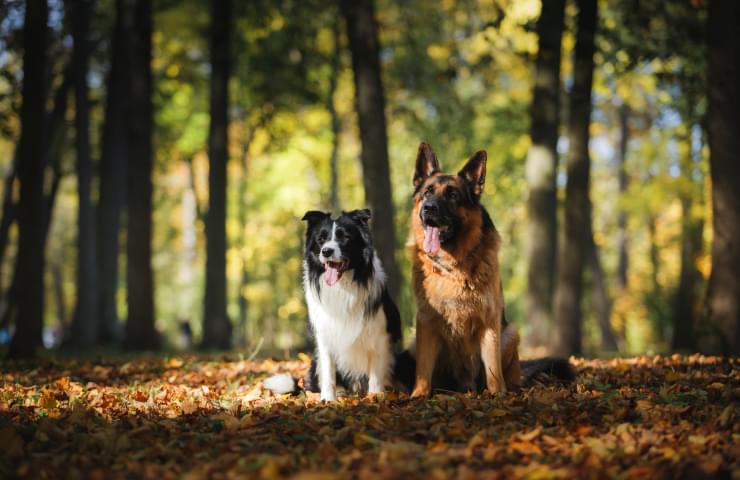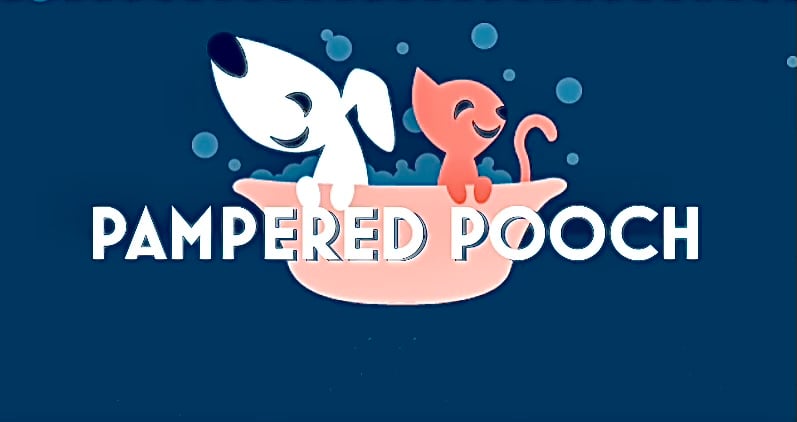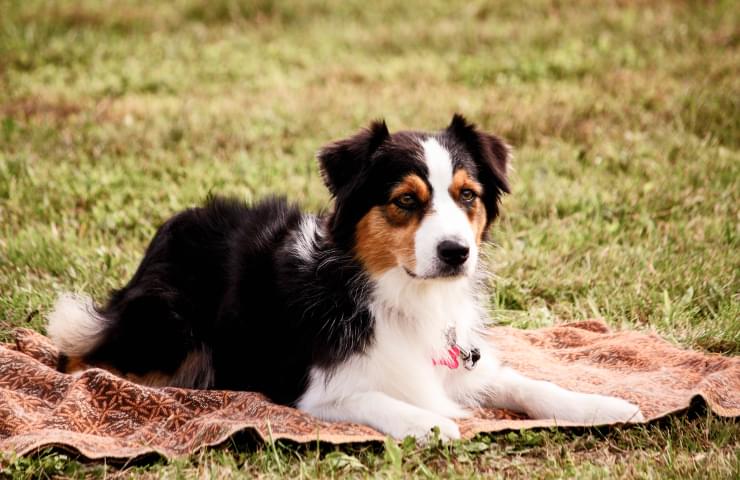
#1 Asked Question
How Often Should I Groom My Pet?
This is my most commonly asked question, and the answer, well it varies from dog to dog, but let me try to break it down in a way that any owner can understand.

MY NAME IS GABRIELA GUERRERO WRIGHT, THIS IS MY WEBSITE. MY COLLEGE PROFESSOR ASKED HOW I COULD PROVE THIS WAS MY DESIGN, AND WHILE I USED AIDS LIKE THE DESIGN TEMPLATES, THIS IS MY PROOF. :)

#1 Asked Question
This is my most commonly asked question, and the answer, well it varies from dog to dog, but let me try to break it down in a way that any owner can understand.

Common Question
When booking a groom, it may be particularly helpful to know your pet's coat type, especially if you have no idea what their breed might be. Here's how you can find out what kind of coat your dog has.

Common Question
Beyond the basics of brushing their hair and exercising your pet, what care can you do at home?
Lets start simple with dogs and what most people know already: shorthair dogs need a lot less maintenance. Shorthair dogs can still get, dirty, stinky, oily, and shed quite a bit, but this doesn't mean they need baths more frequently. The average short haired dog (single coat), only needs a bath every 8-12 weeks, however at a minimum they need their coat brushed weekly to help clean, naturally distribute healthy oils, and help reduce shedding and dander build up. If you have a shorthaired dog that is often itchy with flakes of dandruff in their coat, this can be a sign that they are not brushed enough or they are being bathed too frequently, which can dry out their coat.
Medium coat dogs are a little more complex than shorthaired dogs. These dogs more commonly have double coats and shed more often. So what does this mean for their grooming needs? Well, in short, more brushing. Medium coat dogs should be brushed at least twice a week, as the undercoat often traps hair and oils that can cause buildup of bacteria and dander, which in turn causes smells. Medium coat dogs can go about 6-8 weeks between grooming if they are brushed frequently. For dogs that are not brushed frequently enough, I would recommend more frequent grooming (every 2-6weeks), with the biweekly option switching between waterless de-shedding and full grooms to distribute and add moisture to the coat. Too frequent bathing can cause its own set of problems so its important to brush frequently so that your dog can go further in between grooms and maintain a healthy balance of natural oils in their coat.
Long-haired dogs of course need the most amount of maintenance. These kinds of dogs should be brushed a few times weekly to daily, and if you keep their coat long twice daily or more. Like humans, their hair is prone to poor distribution of oils, breakage, knots and matting. The only way to maintain this and keep your dog happy and healthy is by regular brushing, baths every 4-6 weeks, and hair cuts every 6-12 weeks. Some dog's coats grow faster, which means they may need touch up trims more frequently to prevent knotting, help keep a cleaner coat, and keep their hair out of their eyes. A good balance of both baths and cuts can be maintained by going to the groomer every 6 weeks, which is what I recommend the most, but home brushings, trims and other maintenance can extend this time.
Cats are generally lower maintenance in terms of bathing, however grooming and maintenance is still a part of necessary care for your cat. Cats spend hours of their day grooming themselves, this makes bathing less necessary or unnecessary for most healthy cats. Your cats coat type will determine the maintenance they require from you.
Shorthair cats require the lowest amount of maintenance. Their main care routine should include weekly brushings to help reduce shedding and furball issues, and biweekly nail clippings, especially if you have an indoor cat. Most vets do not recommend bathing with water unless your cat has health issues that demand it. Baths can be particularly stressful on cats, so I mostly recommend waterless baths every 8-12 weeks for your kitty, which are more enjoyable and help with shedding, cleaning out dirt, litter dust, and built up oils, or any unpleasant smells.
Medium and long hair cats require more maintenance, but not in the bath sense. Long haired cats should be brushed daily, and may require haircuts here and there on their sanitary areas, paws, and sometimes face area too. Matting and excessive hairballs is a common issue with these kinds of cats, so some owners prefer to trim their cats hair to a more manageable length. While there is nothin particularly wrong with this, it is not suitable for all cats, and can be particularly stressing to them. Medium length haired cats should be brushed at least twice a week to help with shedding, tangles, and any other particles that can more easily be caught in their hair. For both coat types I still recommend waterless baths every 8-12 weeks (can be done at home or by a groomer), with potential hair trims around the same time if needed.

Smooth coated dogs have short hair that lies flat and close to the skin giving it a smooth and shiny look. Although it is easy to maintain, it is high shedding, with hair cycles that shed every 1-12 weeks. The single coat makes your pet more prone to sensitive skin, insect bites, and hotspots as there is a thinner barrier of protection for their skin. For these pets I recommend the equi-groomer brush to help brush and de-shed, or other rubber brush alternatives, such as groomer gloves and weekly or bi-weekly brushing.
Breed examples include: Pointers, Doberman Pinschers, Great Danes, Chihuahua (shorthaired), Bull Dogs, Staffordshire terriers, Dachshunds, and Most Hounds.
Again this coat is short and close to the body, but it is more harsh and coarse. Natural body oils can create a "doggy odor" and a film will be felt when your dog is starting to get dirty. This one is also high shedding, with cycles every 1-12 weeks, and can also be more prone to sensitive skin. For these pets weekly brushes with a gentle, small bristle brush, or rubber brush is recommended. These include the equi-groomer and other rubber brushes, a Furminator, a short bristle slicker brush, or dense-bristle horse hair brushes.
Breed examples include: Labrador Retrievers, Beagles, Basset Hounds, Pugs, Fox Terrier Smooth, Bull Mastiffs, and Shar-Peis. Also includes most short haired cats.
This coat type is a combination between long and silky coat, and short smooth coat. The coat is typically longer on the undercarriage, arms and paws, while being short around the face, front of legs, and body. For these pets, I recommend a medium or short bristle slicker brush, an anti static detangler spray, an equi-groomer for de-shedding, and brushing 1-2 times a week.
Breed examples include: Golden retrievers, Australian Shepherds, Cocker Spaniels, Border Collies, Chihuahua (long haired), and Japanese Chins.
Double coated breeds consist of straight and short, to moderate and long hair. They have a harsh outer coat and soft undercoat that is thick and dense to protect them in extreme weather conditions. Seasonal shedding happens year round, but can be excessive in more dramatic weather changes when blowing coat. Their natural body oils can create a "doggie odor" that worsens with infrequent coat maintenance. For these breeds I recommend slicker brushes with medium or long bristles depending on their coat length, metal combs and de-matting undercoat brushes for hair tufts and knots, anti-static detanglers, and the equi-groomer for de-shedding, and a minimum of 4 brushes a week.
Breed examples include: Malamutes, Akitas, German Shepherds, Welsh Corgis, Huskies, Collies, and Shiba Inus.
This coat is a combination of long and silky hair and short silky thick undercoats. It is highly prone to tangles, matts, and knots. Their natural body oils commonly generate the "doggie odor" that can be particularly hard to rid them of without stripping their natural oils that protect and moisturize their skin. For these pets I recommend a combination of slicker, de-matting brushes, undercoat rakes, detangling pin brushes, and the equi-groomer for de-shedding and maintenance. These dogs should be brushed 4-7 times a week or more especially if they are frequently wet or outdoors.
Breed examples include: Bernese Mountain Dogs, Chow Chow, Great Pyrenees, Pomeranian, Keeshond, Pekingese and Sheepdogs. Includes most long-haired cats.
Silky dogs have a combination of long smooth and short smooth coat. Their coat is very short and smooth around their face and front of legs while being long on the undercarriage, back of legs, and chest, similarly to the combination coat. However, unlike the combination coat, they do not have an undercoat, so their coat is slicked to their skin and thinner feeling. For these pets I recommend a slicker brush, detangling pin brushes, metal combs, and the equi-groomer with brushes daily to weekly.
Breed examples include: Many Setters and Spaniels
This coat is very similar to the silky coat in many ways except, it is continually growing and considered non-shedding. Because their hair is continually growing, brushing is imperative to their daily care with an absolute minimum of 3 brushes a week, otherwise knots, mats, and tangles will form quickly. For these pets I recommend slicker brushes, detangling pin brushes, and combs.
Breed examples include: Afghan Hounds, Lhasa Apso, Yorkshire Terriers, Bearded Collies, Maltese and Shih-Tzu.
This coat is considered non-shedding, it is soft, curly, wavy, or fleecy. Their hair is particularly thin, and therefor prone to tangles and matting. For these pets I recommend regular combing at least 3 times a week with a slicker brush, detangling pin brush, metal combs, and anti-static detanglers.
Breed examples include: Poodles, Bichon Frise, Irish Water Spaniels, Old English Sheepdogs, Lhasa Apso, Silky terrier, and Yorkshire Terriers.
These breeds have a soft, dense undercoat, and a wire, thick coat on top. They are known to seasonally shed in cooler climates. Longer forms of this coat can form matts, knots, and tangles. For maintenance I recommend a short pin slicker brush, rubber de-shedding brushes, gentle pin detangling brushes, and combs for longer haired dogs, brushing 1-2 times a week, or more frequently for longer haired dogs.
Breed examples include: Airedale Terrier, Cairn Terrier, Welsh terrier Schnauzers, Wirehaired Pointers, Scottish Terriers, and Irish Wolfhound.
This is obviously any hairless or patchy haired dog. They are highly prone to sensitive skin, hotspots, and sunburn and require some brushing on the areas where they have hair. For these dogs I recommend conditioning sprays, dog safe sunscreen (I like the lucky pup sticks), and a gentle slicker brush or metal comb for their hair.
Another thing you can do at home is eye and ear cleaning, though consult with your vet on the best way to do the latter for your dog, excess liquid can lead to ear infections, especially in breeds more prone to them. Most pet shops offer options for eye cleaning solutions and wipes, if your dog is more prone to tear staining, scratched eyes, or eye goop I highly recommend finding one of these that works for you and cleaning their eyes anywhere from 3-7x a week. For dogs such as pugs, hounds, and bull dogs, this cleaning should extend to their creases and in some cases, creams to help clear out bacteria and keep these areas dry should be applied. I am a fan of Squishface products for cleaning and maintaining creases.
Lastly, you can file your dogs nails frequently. You can do this either by regular walks, dremmel, or a metal nail file, and it has many benefits. For one, a dog who is more used to having their paws touched and their nails gently touched will be much more comfortable when getting their nails clipped or their paw pads shaved out by a groomer, or by their owner. this will also help keep nail quicks at a healthy length, the longer your dogs nails grow out, the longer their nail quick will become, making it harder and harder to safely cut them down to an appropriate length.
For one, teeth brushing. The most common issue seen in pets is some degree of periodontal disease, and the simplest solution is getting your pet's teeth to a healthy state (whether through strong plaque reducing supplements, or a professional cleaning), and maintaining it. The easiest way to maintain healthy teeth is the same in animals as it is for humans: brushing. Cats and dogs should have their teeth brushed at least once a week whether you do it manually, give them a water additive, or give them something to chew on. I hear all the time, "I give my pet greenies" and while these are widely marketed for teeth cleaning, and even endorsed by some vets, they simply are not enough to deter periodontal disease. I recommend a pet toothbrush, tooth wipes, or water additives for regular cleanings. For plaque build up their are some serums that work over time, but one of the best ways is by getting a raw cow, sheep, or pig knuckle bone (depending on your dog size, smaller bones for larger dogs are a choking hazard), for your dog to chew on, this will help them naturally scrape off the plaque. For even more serious cases: potent bad breath, serious plaque build up, receding gum lines, etc, please consult your vet, as often times, more serious measures need to be taken.